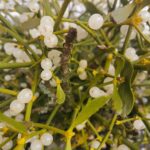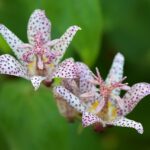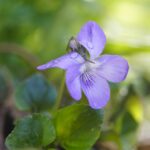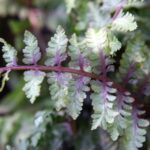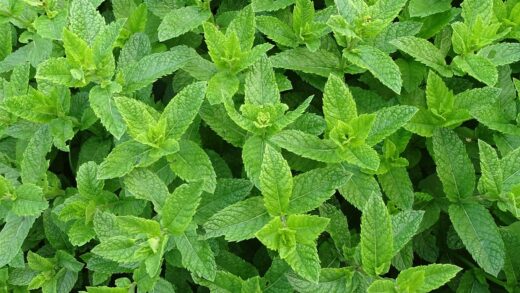The Colorado potato beetle, known scientifically as Leptinotarsa decemlineata, is one of the most significant and well-known pests in potato cultivation worldwide. Originally from North America, it spread to Europe in the early 20th century and has since advanced unstoppably across the continent, causing severe economic damage to agriculture. Effective control is based on a thorough understanding of the pest’s lifestyle and biology, which allows for the development and timing of an appropriate control strategy. Without this knowledge, the fight often proves to be a futile effort that is not only costly but also unnecessarily burdens the environment. Successful plant protection, therefore, requires an integrated approach built on prevention, biological and agrotechnical methods, and carefully selected chemical interventions.
The life cycle of the Colorado potato beetle is exceptionally well-adapted to temperate climates, enabling its rapid proliferation. Adult beetles overwinter in the soil, typically at a depth of 15-30 centimeters, and emerge in the spring when the soil temperature consistently rises above 14-15°C to begin feeding on freshly sprouted potato leaves. Following feeding and mating, females lay their characteristic orange-colored egg clusters on the undersides of leaves, with each cluster containing 20-80 eggs. A single female can lay up to 500-800 eggs during a season, which clearly illustrates the pest’s immense reproductive potential. The larvae hatch from the eggs in 5-15 days, depending on the weather.
The larvae go through four instars during their development, causing the most damage during this period. The young, L1 and L2 stage larvae consume relatively little, but the more developed L3 and especially L4 larvae are extremely voracious and can completely defoliate potato plants in a short time. The entire larval development takes about two to three weeks, after which the larvae move into the soil to pupate. After about two weeks, the new generation of adults emerges from the pupae, either continuing to cause damage and creating another generation or, under unfavorable conditions, moving into the soil to overwinter. In Hungary, two generations typically develop annually, with a third sometimes possible in warmer southern regions.
The damage caused by the Colorado potato beetle is primarily manifested in the destruction of foliage, i.e., defoliation. Both larvae and adult beetles consume the leaves, flowers, and stems of the potato plant, thereby reducing its assimilation surface. This process inhibits photosynthesis, leading to a slowdown or complete cessation of tuber growth. In the case of a severe infestation, the pests can cause up to 100% leaf loss, which can result in the complete loss of the crop. Damage occurring during the flowering and intensive tuber-setting period is particularly critical, as the plant is most sensitive to foliage loss at this time. The extent of the damage can be further exacerbated by the fact that various pathogens, such as late blight, can more easily enter through the chewed plant parts.
Agrotechnical and preventive control strategies
The most effective and environmentally friendly way to combat the Colorado potato beetle is through the consistent application of preventive agrotechnical procedures. These methods aim to disrupt the pest’s life cycle and create unfavorable conditions for its proliferation, thereby reducing the need for subsequent chemical interventions. The fundamental principle of Integrated Pest Management (IPM) is that control does not begin with spraying but with soil preparation and crop rotation planning. Careful planning and adherence to preventive steps enable more stable and sustainable production in the long run. Prevention is therefore not just an option, but the cornerstone of modern crop production.
One of the most important agrotechnical elements is the strict adherence to crop rotation. Potatoes should never be planted in the same field for several consecutive years, as this promotes the mass emergence of overwintering beetles in the spring. After potatoes, it is advisable to choose a crop that is not a host plant for the beetle, such as cereals, rapeseed, or legumes. By implementing a rotation cycle of at least three to four years, the size of the pest population can be significantly reduced, as the emerging adults from overwintering will not find a food source, causing most of them to die or be forced to migrate. This method effectively breaks the continuous presence of the pest in a given area.
Soil cultivation techniques are also crucial for control. Autumn deep plowing is one of the most effective physical methods for reducing the number of overwintering beetles. Beetles have a harder time or are unable to reach the surface from the deeply turned soil layer in the spring, and plowing also mechanically thins the population and exposes them to winter frosts. During spring soil work, the proper formation of ridges and keeping the soil loose helps the potato’s rapid and vigorous initial development, which increases the plant’s tolerance to initial damage. Planting at an early but frost-free date can also be advantageous.
Mechanical and physical control methods are mainly effective in smaller areas, home gardens, or organic farms. These include the regular manual collection of beetles, larvae, and egg clusters, which, although labor-intensive, offers a chemical-free solution to the problem. In larger areas, digging trench traps can prevent the influx of beetles migrating from neighboring fields or forest strips. These trenches should be designed with steep walls and lined with plastic foil to prevent the trapped beetles from climbing out. another interesting option is planting trap crops, such as early potato varieties, along the edge of the field to attract the beetles, after which these rows can be treated or destroyed in a concentrated manner.
Biological control options
Biological control is an environmentally friendly and increasingly prominent branch of the fight against the Colorado potato beetle, based on the use of natural enemies and biologically derived active substances. The goal of this approach is not the complete eradication of the pest, but to maintain the population at a level that no longer causes economic damage. The advantage of biological control is that it is selective, meaning it spares beneficial organisms and leaves no harmful residues on the crop, making it an excellent fit for integrated and organic farming systems. However, successful application requires proper timing and consideration of environmental conditions.
In nature, there are numerous predatory and parasitoid organisms that naturally reduce the Colorado potato beetle population. Although they are rarely able to control the entire population on their own, their presence can significantly contribute to reducing damage. Such beneficial organisms include tachinid flies (Myiopharus doryphorae), which lay their eggs in the beetle larvae, or predatory stink bugs like Perillus bioculatus, which consume both larvae and eggs. The larvae of predatory ladybugs and lacewings also prey on the eggs and young larvae of the Colorado potato beetle. Protecting these organisms and promoting their proliferation is crucial, for example, by planting flowering strips at the edges of fields.
Among microbiological preparations, the bacterial strain Bacillus thuringiensis var. tenebrionis (Btt) is the best-known and most effective biological agent against Colorado potato beetle larvae. This bacterium produces a crystalline protein (toxin) that, upon entering the larval gut, becomes activated and binds to the gut wall cells, causing them to break down, which leads to the cessation of feeding and the death of the larva. The effectiveness of Btt preparations largely depends on the timing of application; it is most optimal to spray against young, L1 and L2 stage larvae when they are most susceptible. The treatment should preferably be carried out in the afternoon, as the active substance is sensitive to UV light.
Botanical insecticides, i.e., plant-derived insecticides, also play an important role in biological control. Preparations with the active ingredient azadirachtin, extracted from the seeds of the neem tree, for example, act in several ways: they have an antifeedant, insect growth regulator, and oviposition deterrent effect. Another active ingredient produced by microbial fermentation is spinosad, derived from the bacterium Saccharopolyspora spinosa, which is an effective neurotoxin against the pest’s larvae and adults while being relatively gentle on beneficial organisms. The use of these biopesticides requires care but can effectively reduce the use of synthetic chemicals.
Chemical control and resistance management
In large-scale potato production, chemical control is often an unavoidable element of the technology, especially in cases of severe infestation when agrotechnical and biological methods no longer provide sufficient protection. However, the use of insecticides carries great responsibility and should only be implemented as part of a comprehensive integrated pest management strategy. This means that the decision to spray should only be made after regular monitoring of the pest population and when the economic injury level is reached. Reckless, calendar-based chemical use is not only costly and environmentally polluting but is also the primary cause of resistance development.
Numerous active ingredients with different modes of action are available for chemical control of the Colorado potato beetle, and it is advisable to rotate them consciously. Neonicotinoids (e.g., imidacloprid, thiamethoxam) used for seed tuber treatment provide long-lasting, systemic protection at the beginning of the season, protecting young plants from damage by overwintering adults and the first larval generation. Foliar treatments include contact and systemic pyrethroids, benzoylurea compounds that inhibit larval molting, and modern, highly selective and effective diamides (e.g., chlorantraniliprole) and spinosyns. When selecting the appropriate product, the developmental stage of the beetle and the prevailing environmental conditions must always be taken into account.
The timing of spraying is a critical factor for the success of chemical control. The most effective and recommended strategy is to intervene against the massively hatching young larvae (L1-L2 stage). At this stage of development, the larvae are most sensitive to most insecticides, and the foliage damage is still minimal. Against adult beetles and more developed larvae (L3-L4), much higher doses are needed, and the effectiveness of the control is reduced. Spraying should be carried out in the early morning or late afternoon, in calm weather, to ensure proper coverage and to protect bees.
One of the worst traits of the Colorado potato beetle is its rapid ability to develop resistance to insecticides, which poses a serious challenge to farmers. To prevent the development of resistance, conscious rotation of active ingredients is essential. This means that within a single season and in consecutive years, products with different modes of action (different IRAC codes) must be alternated. The use of sublethal doses, i.e., lower than recommended, should be avoided, as this promotes the survival and proliferation of less sensitive individuals. The most effective way to manage resistance is to integrate chemical control with the previously discussed agrotechnical and biological methods, thereby reducing selection pressure.



